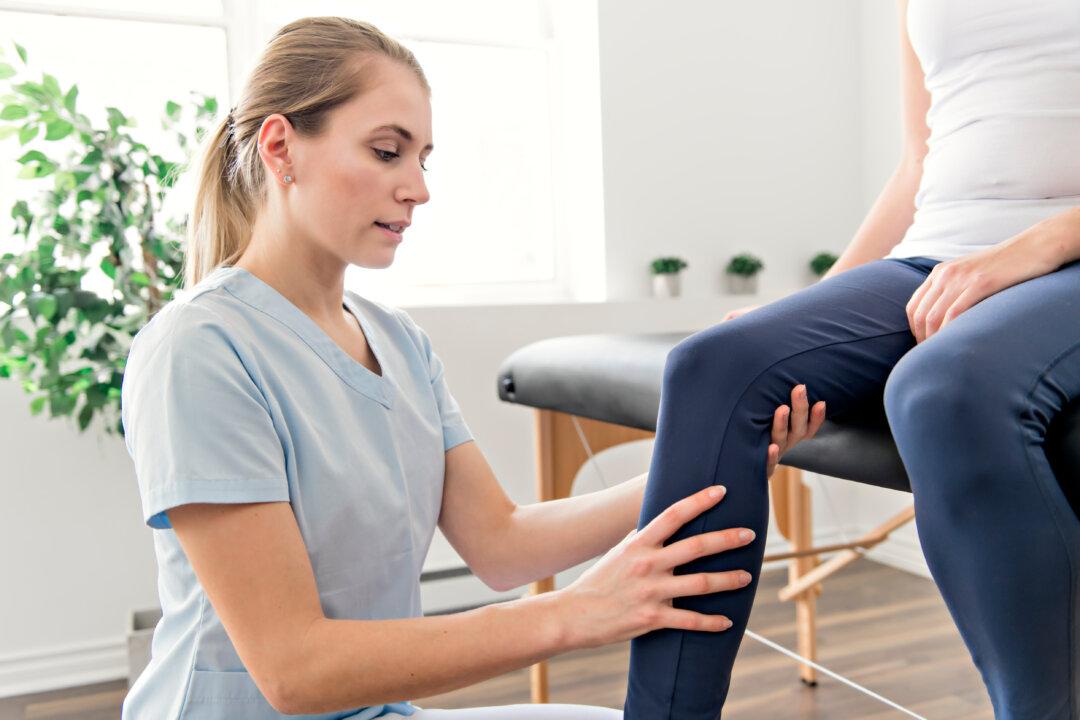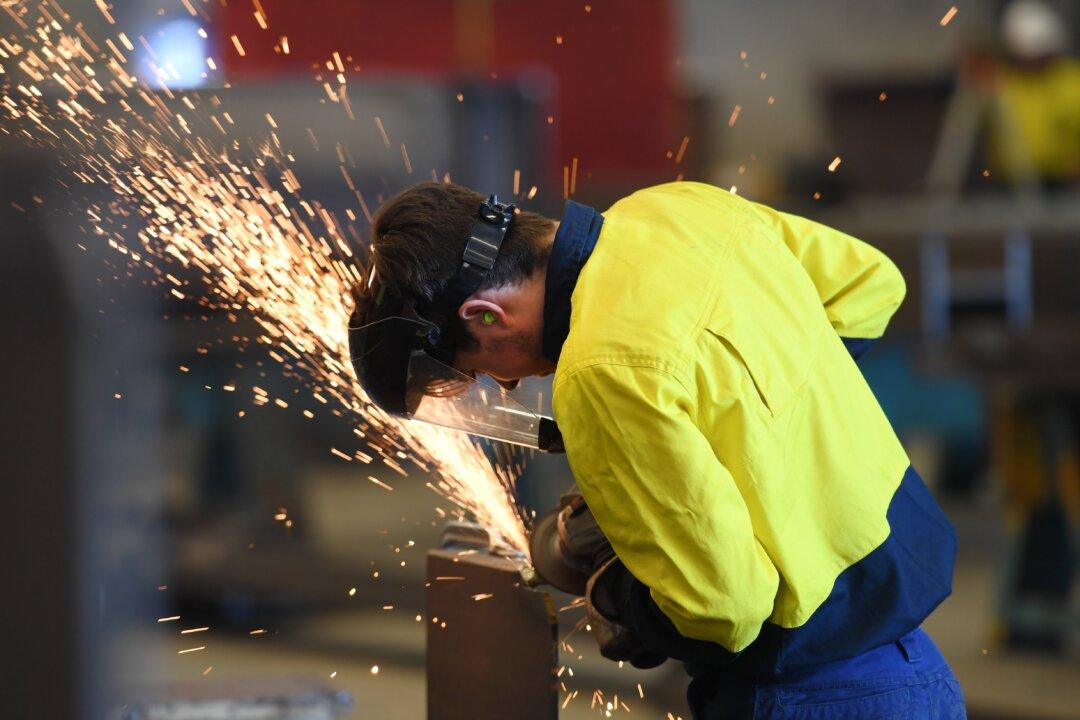For years, it was believed that a ruptured anterior cruciate ligament (ACL)—the band of dense connective tissue inside the knee that runs from the femur (thigh bone) to the tibia (shin bone)—had limited healing capacity.
The Research
Stephanie Filbay, principal research associate at the University of Melbourne’s Department of Physiotherapy, has led two studies on ACL rehabilitation—the most recent demonstrating the capacity for the ACL to self-heal and a previous study showing the option of using a nonsurgical “cross-bracing protocol.”“In our recent study, we found that those with these signs of healing had excellent 12-month outcomes, including knee function, quality of life, and stability—and 92 percent had returned to pre-injury sports,” Ms. Filbay told The Epoch Times in an email.
According to Ms. Filbay, there are different degrees of ACL healing, but in many cases, the ACL is restored to its preinjury appearance through conservative management with normal alignment seen in magnetic resonance imaging (MRI).
“In a different study, we found that people with signs of ACL healing on a two-year MRI reported better patient-reported outcomes at two years compared to people who had undergone ACL surgery,” she said.
Ruptured ACL’s Self-Healing Ability
In the first study published in the British Journal of Sports Medicine in November 2022, researchers analyzed 120 active, nonprofessional athletes aged 18 to 35 who had ruptured their ACL and were managed with either early ACL reconstruction or rehabilitation and optional delayed surgery.Data was collected from MRIs, radiographs, passive knee laxity measures, and patient-reported outcomes at baseline, three months, six months, and at one, two, and five years.
Of the 30 participants who opted for rehabilitation alone with no ACL reconstruction, 16 (53 percent) showed evidence of healing at two years, while 58 percent showed evidence of ACL healing at a five-year follow-up. ACL healing was observed on an MRI as early as three months after the injury.
Additionally, participants in this group reported better sports and recreational function and quality of life two years post-injury compared with those who had reconstructive surgery.
While Akhil and Sontakke’s study found that the ACL “seldom heals without intervention,” it also stated that surgical reconstruction using tendon grafts leads to a higher incidence of osteoarthritis within two decades after surgery.
This prognosis propelled Ms. Filbay to explore this area further.
Bracing the Knee Is Effective for ACL Rehab
To further her research, Ms. Filbay studied the effects of the “cross-bracing protocol” (CBP) on a torn ACL. The study was published in the British Journal of Sports Medicine in June 2023.CBP is a type of bracing and physiotherapy developed by the late orthopedic surgeon Dr. Mervyn Cross. It aims to reduce the gap and facilitate tissue bridging and healing between the ligament remnants by initially immobilizing the knee at 90 degrees for four weeks.
The study included 80 participants ranging in age from 10 to 58, including four professional athletes. All participants had an MRI-confirmed acute ACL rupture.
Each participant’s injured knee was immobilized at 90 degrees for four weeks. When combined with physiotherapist-supervised rehabilitation, progressive increases in range of motion occurred in the knees after four weeks. This form of rehabilitation targets lower limb neuromuscular control, muscle strengthening, and functional training and enables a return to sports and recreational activities.
The brace was removed at 12 weeks.
The study found that 90 percent of participants (72 people) who undertook the bracing method showed evidence of ACL healing on an MRI three months after an ACL rupture.
However, of the 6 out of 8 ACLs that didn’t heal, an MRI at three months showed the ACL was attached to the lateral or side wall or to the posterior cruciate ligament (PCL).
The PCL works as a counter to the ACL, with both ligaments arranged in a crisscrossed fashion to stabilize the knee joint while preventing the thighbone (femur) from sliding away from the shinbone (tibia). It also prevents the knee from twisting.
Moreover, 11 participants (14 percent) experienced reinjury, while only one of 39 participants with meniscal injury had persistent symptoms after the CBP and underwent surgery.
The researchers noted that as this was a pragmatic study, data were collected in the course of clinical practice rather than in a research setting. As such, some adaptations were made to the CBP over time.
Ms. Filbay explained that the protocol is based on the principle that reducing the distance between the ruptured ends of the ACL tissue using a knee brace and immobilizing the tissue in this reduced position will facilitate healing.
She said that more than 530 patients have been managed with CBP at the University of Melbourne. “This includes more than 10 professional athletes; most have experienced ACL healing and returned to their respective sports.”
“Professional athletes face unique pressures when deciding on a treatment decision, including tight return-to-sport timelines,” Ms. Filbay said. “Like any person with an ACL injury, they should weigh up the pros and cons of different treatment strategies to choose a treatment that works best for them.”
How to Prevent an ACL Rupture
ACL injuries commonly occur when the knee experiences a sudden twisting motion, a quick change in direction, or a wrong landing technique. They can leave an injured athlete sidelined for a period of time.Muscles around the knee should be strong and flexible to prevent an ACL rupture. An ACL rupture is usually felt as the knee “giving way,” buckling, or when a person hears a “pop” or “snap” inside the knee. A physical therapist or physician usually conducts physical tests to assess the injury; X-rays or MRIs may be required.
- Practice good jumping technique by bending the knees while landing evenly on both feet.
- When pivoting, crouch and bend at the knees and hips.
- Strengthen your core, hamstrings, and quadriceps.
- Train to improve balance, resistance, and speed.
- Consider plyometric exercises where you quickly generate intense force to build strength.






